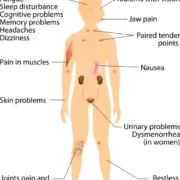Frozen Shoulder: Why It Happens and How to Treat It
You’ve probably heard of frozen shoulder, but what is it and how can you recover? Shoulders are the most mobile joint in the human body, and this mobility is essential to get full use of your hands and arms. There are many causes of shoulder pain, but when your mobility is limited by pain, tightness, or stiffness, it could be a sign you are suffering from frozen shoulder.
Let’s learn about why people get frozen shoulder and how to treat it.
What is Frozen Shoulder?
The shoulder is made up of three bones, surrounded by ligaments, tendons, and nerves. A joint capsule holds all of those parts together and keeps them in place. Frozen shoulder happens when that shoulder joint capsule thickens and tightens, causing pain when a person tries to move their shoulder. Some patients with frozen shoulder report increased pain at night, sometimes strong enough to interrupt their sleep.
It typically comes on gradually in most people. It has three stages that can each last several months:
- Freezing Stage: the shoulder’s range of motion typically becomes more limited and using the shoulder becomes more painful
- Frozen Stage: Pain might decrease, but range of motion and stiffness increase
- Thawing Stage: Range of motion and ability to use the shoulder start to improve
How Can You Get It?
Frozen shoulder occurs for a variety of reasons, and there’s no one definitive reason why it happens to some people and not others. However, it does tend to be more prevalent in patients who have one or more of the following:
- Over 40-years-old
- Female
- Rotator cuff injury
- Broken arm
- Stroke
- Recovering from shoulder surgery – especially when patients do not follow their physical therapy plan.
- Diabetes
- Other diseases, including heart disease, thyroid disease, tuberculosis, and Parkinson’s
How Is Frozen Shoulder Diagnosed?
The doctors at the Colorado Center for Orthopaedic Excellence will determine whether you have frozen shoulder by discussing your symptoms and performing a physical examination. This can include asking you to move your shoulder and then gently manipulating it to determine your range of motion. Other tests may include an X-ray or MRI, but are not typically required to diagnose frozen shoulder.
How Is It Treated?
Treatment for most frozen shoulder sufferers involves stretching and physical therapy to help loosen and strengthen the joint. This typically helps increase range of motion and reduce stiffness. Regularly performing specific exercises recommended by a doctor or physical therapist is generally an effective treatment, although it can still take as long as three years to fully resolve.
Over-the-counter pain relievers, like aspirin or ibuprofen, can help decrease pain. But if the pain is more severe, your doctor might recommend a steroid injection or numbing medication.
If you don’t start feeling better over time or the condition does not improve, there are additional treatments. Some physicians may perform joint distention – injecting sterile water into the joint capsule to help stretch it out. Surgery is another course of treatment, but it is rarely necessary to treat frozen shoulder.
It is uncommon for frozen shoulder to return if the patient follows their treatment plan. However, contributing conditions like diabetes can make a recurrence more likely.
One of the most common causes of frozen shoulder is immobility, often after injury, surgery, or a stroke. If you are having a hard time moving your shoulder, talk to one of our specialists about diagnosis and treatment, including exercises to help maintain your range of motion and reduce your likelihood of getting it:
To make an appointment or learn more, click here.







